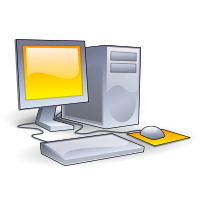It didn’t take nearly as long to count the votes for our desktop poll as it did for last week’s distro poll, mainly due to the fact that not as many of you voted, but also because there aren’t nearly as many desktop environments and window managers as their are Linux distros. Also, unlike the distro poll, there was a clear cut winner instead of a virtual tie.
 Actually, of course, it’s not about winners and losers. It’s about what you like. It’s about preferences. After all, unless you’re a diehard command line person, the desktop is how you interact with your computer.
Actually, of course, it’s not about winners and losers. It’s about what you like. It’s about preferences. After all, unless you’re a diehard command line person, the desktop is how you interact with your computer.
Again this year, KDE tops the list with a commanding lead, piling up over a quarter of the 617 votes cast. This is a huge drop from the 70 percent showing it made the last time we conducted a desktop poll, back in January and February of last year. In that poll, however, users were only given three desktop choices — KDE, GNOME 3 and Cinnamon. This year, voters were served up a menu that included eight popular desktops from which to choose. As in last year’s poll, voters could also opt to place write-in votes.
Why KDE? According to your comments, there were two major reasons: stability and configurability, with many of you saying, “It just works.” But there seemed to be some disagreement over whether KDE’s legendary configurability is as great as it once was.


 It’s hard to remember that it wasn’t that long ago that we only had a couple of choices to meet our computing needs. As recently as 2007, the year before Obama was elected, someone looking for a new computer basically could choose between a desktop or a laptop. In mobile, Research In Motion offered the Blackberry, which candidate Obama was famous for using — and still uses.
It’s hard to remember that it wasn’t that long ago that we only had a couple of choices to meet our computing needs. As recently as 2007, the year before Obama was elected, someone looking for a new computer basically could choose between a desktop or a laptop. In mobile, Research In Motion offered the Blackberry, which candidate Obama was famous for using — and still uses. According to the results of our FOSS Force Desktop Poll, our readers prefer KDE over any other desktop environment by a wide margin. In fact, all other desktops were practically left at the gate.
According to the results of our FOSS Force Desktop Poll, our readers prefer KDE over any other desktop environment by a wide margin. In fact, all other desktops were practically left at the gate.
